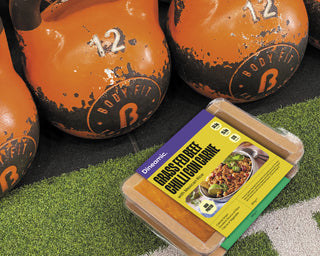It’s that time of year again. With the memories of the festive season gradually fading, we set our sights on the year ahead. And for a lot of us, we take this opportunity to try to hit the ground running, and make some improvements on the year that’s just passed. Let’s take a look at some of the most common New Year’s Resolutions for 2015:

[University of Scranton, Journal of Clinical Psychology, Norcross, John.] Recognise any of these? They are likely all too familiar to most of us. Every year, the same ideas tend to pop into our head under the guise of New Year’s resolutions – but that’s all they are, ideas. Without any structure put in place, to turn these ideas into something more concrete, it’s likely you will have a hard time turning ideas into actions.

Statistics show that our resolutions are often left by the wayside because we don’t get stuck into them with the right intention. Often resolutions are an ideal state that we would like to achieve, but haven’t put that much thought into HOW we are going to do it, or even WHY it’s important. Let’s look at a typical resolution: “This year I’m going to join the gym and lose weight.” While this is a great starting point for change, it’s also really vague, and is it even that realistic? If you’re someone who doesn’t have a regular exercise routine and healthy eating pattern going, then there are probably other things to address beforehand. Justine Guest, personal trainer and owner of Babes On The Run has a lot of experience in helping her clients turn their ideas, into proper goals. “Goal setting is serious business and if done properly, it’s more than a sentence and a picture on a vision board,” said Justine. The biggest tip I have for newbies is to focus on making the routine your goal. Do something every day at the same time if you can. Don’t have days off – but alter the intensity (so walk instead of gym every second day). You need to get your body used to working out and it’s actually easier if you don’t have days ‘off’,” she said.

An effective goal setting technique is the SMART framework: make it Specific, make it Measurable, make it Attainable, make it Realistic and put a Time constraint on it. Let’s go back to our example resolution, and see how this is different using SMART: “I’m going to lose 5kgs (specific) in 6 months’ time (time constraint). To do this I’m going to walk for one hour a day after work (achievable) and I will track my progress fortnightly (measurable). Make sure that your goal is attainable by looking at your circumstances head on. You need to be able to fit in an hour after work, and ideally you should have a health professional’s opinion of a safe amount of weight loss to achieve. The other essential ingredient to sticking to those resolutions is successful behaviour change. Justin Moran, owner of Just-In-Time Personal Training, gives good insight on the connection between the brain and the body. “You must remember that your brain controls what your muscles and your body do, so it makes sense that you need to get your brain to change for your body, fitness and health to improve,” Justin said. “Resolutions are doomed unless the motivation is intrinsic, planned and you are at the right stage of behaviour change to stick to them,” Justin added.

There are many theories of behaviour change but one of the most notable is the Transtheoretical Stages of Change model. To summarise, there are six stages people go through before behaviour change is completed: pre-contemplation, contemplation, preparation, action, maintenance and termination. Readiness to change, or how prepared the person is to enter the ACTION stage is the best predictor of success. Someone that has gone through a period of thinking about changing (what would it be like to not smoke every day?), and preparing to change (what support system will I need to have in place to help me?) will be more successful than the person who jumps straight into action (I’m quitting smoking cold turkey as of tomorrow!). Makes sense, right? Do the groundwork, and reap the benefits long term. A good exercise to help you move into the ACTION stage of change is to think about your intentions for wanting to make a change. Why do you want to lose weight? Is it because you have a dress in your cupboard that you want to wear for your birthday? Or is it because you want to look after your blood pressure? Research shows that those who have an intrinsic motivation, that is an internal source of motivation rather than an external factor – will be more likely to successfully engage in behaviour change and see it through. If you’re looking to lose weight this year, Dineamic Accredited Practising Dietitian, Claire Saundry, suggests changing our mindset from dieting to good health and wellbeing. Switching our mindsets from a feeling of restriction and deprivation, to one of positivity and nourishment, is likely to set you up for success in the long term. “The best strategy is to encourage small, gradual changes rather than changing everything at once. Try and change one aspect of your dietary intake each week, for example swapping to a handful of nuts or tub of yoghurt at afternoon tea instead of biscuits or swapping to a glass of natural mineral water with a squeeze of lemon instead of a can of soft drink,” Claire said.

Referring back to your SMART goals and reminding yourself of your motivating factors will provide a support structure for times when you are struggling. Remember that it is absolutely fine to reassess and re-evaluate your goals along the way. If you know you aren’t going to be able to achieve what you wanted in that time frame, then go back to the start. It’s not a race! Positive behaviour change exists on a continuum and there is no finite time that you need to have it done by. We’d love to hear about your specific goals and how you’re achieving them this year. Get in touch at team@dineamic.com.au or on our social networks to share your story. ‘Focus on the journey, not the destination. Joy is found not in finishing an activity, but in doing it.’ – Greg Anderson, wellness author & speaker









